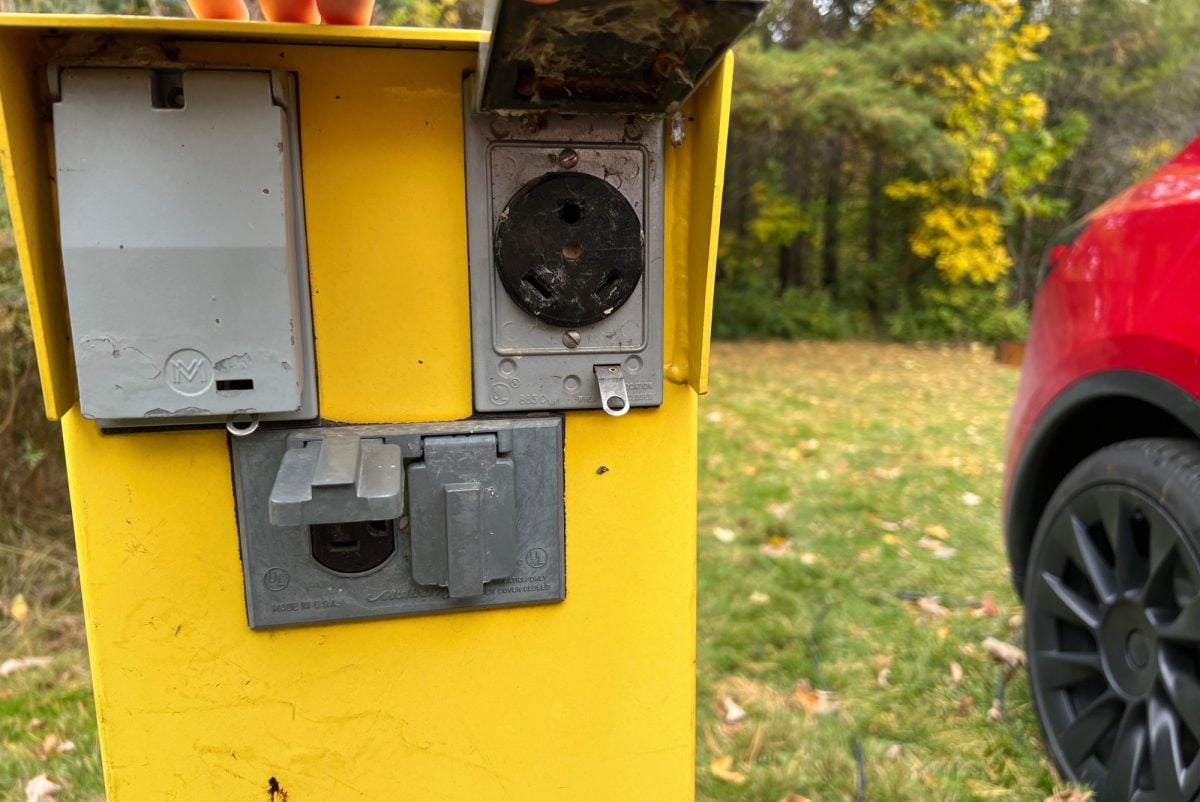Whether you going on a weekend camping trip or a cross-country road trip, campsites and RV parks are easy opportunities for an overnight battery charge. The same electrical posts that power all of the creature comforts of an RV or trailer can be used to charge an electric car at no additional cost. You just need to bring a portable EV charger with the correct set of adapters. As a bonus, you can even sleep inside the climate-controlled EV because no engine is required to run the heater.
In North America, you are likely to find three types of plugs at a campsite: NEMA 5-15 (aka regular wall outlet), TT-30, or NEMA 14-50. Each has advantages and limitations, but all can be used to charge an EV. Let’s dive in and see.
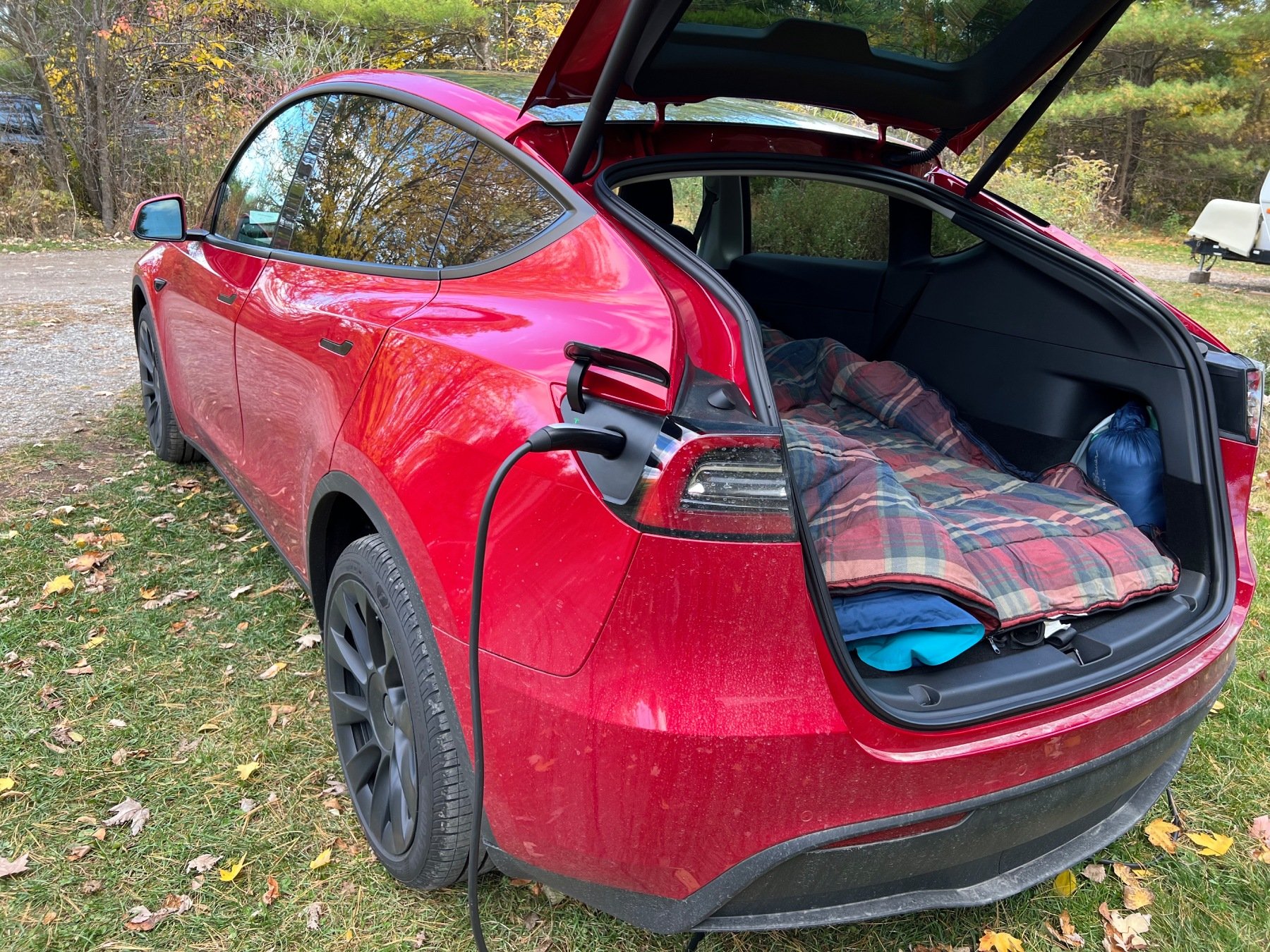
NEMA 5-15 (120V, 15A)
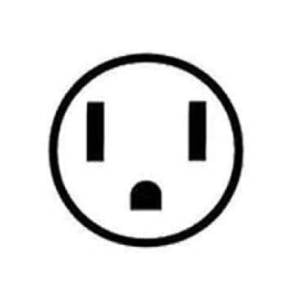
This is the standard household 120V plug that everyone knows and loves. Highly ubiquitous, most campsites will have a 120V source and this type of plug. However, you can only pull 12 amps from this plug with Level 1 charging, which means roughly 1.4 kW. Over a 12-hour stay, you would be lucky to add 16 kWh into the battery. If you’re also sleeping in the EV and running the heat, expect to consume 1kW of power on climate control, so barely any energy will be added to the battery. Most portable EV chargers such as the Tesla Mobile connector come with the NEMA 5-15 adapter out of the box.
If the campsite is described to have 15A electrical service, this is the plug to expect on arrival.
NEMA TT-30 (120V, 30A)

TT-30 is most commonly used for powering small to medium trailer campers. The plug design is very distinct with slanted prongs and three pins. Although it is still 120 Volts, the current is doubled to 30 Amps to allow trailer campers to run more power-hungry appliances. For EV charging purposes, you can safely pull 24 amps or roughly 2.8 kW of power. That means up to 33 kWh of energy is added to the battery during a 12-hour stay, if not running the heater. If the campsite is described to have 30A service, TT-30 is the plug you should expect to find.
Portable EV chargers generally do not come standard with NEMA TT-30 adapters, and you will need to buy one for your collection. For example; in order to connect my Tesla Mobile Connector to a TT-30 plug on a recent camping trip, I purchased a TT-30 to NEMA 14-50 adapter on Amazon. (Almost all portable Level 2 capable EV chargers can connect to NEMA 14-50 plugs) Despite Tesla selling a variety of attachments for the Mobile Connector, there is no TT-30 connector available, so a TT-30 to NEMA 14-50 was needed.
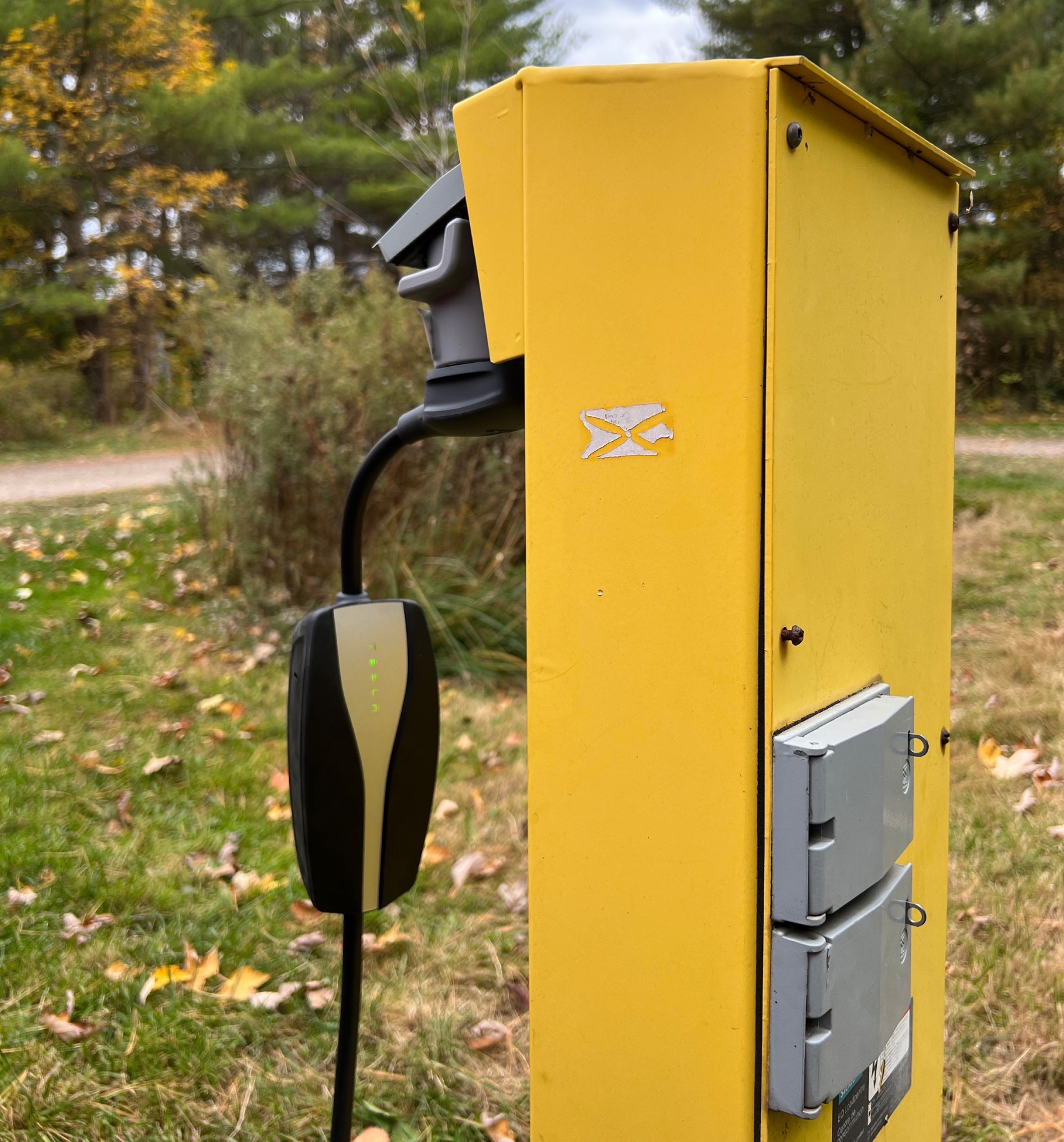
Although this works very well, there are two caveats you need to know about TT-30 EV charging:
- Not all TT-30 to NEMA 14-50 adapters sold online will work for EV charging, in fact, most will not. You need to purchase one that is made specifically for EV charging because it would be wired differently than adapters designed for powering trailer campers. Look for products that specify EV charging in their descriptions, such as this one.
- Before connecting the EV charger to the car using a TT-30 plug, you must limit the car to 24 amps or less. This must be done before connecting the car to the grid, or you risk tripping the circuit breaker. In the case of the Tesla Mobile connector, because we’re going through a NEMA 14-50 attachment, the car defaults to 32 amps. So the user needs to manually reduce it to 24 amps before making the connection.
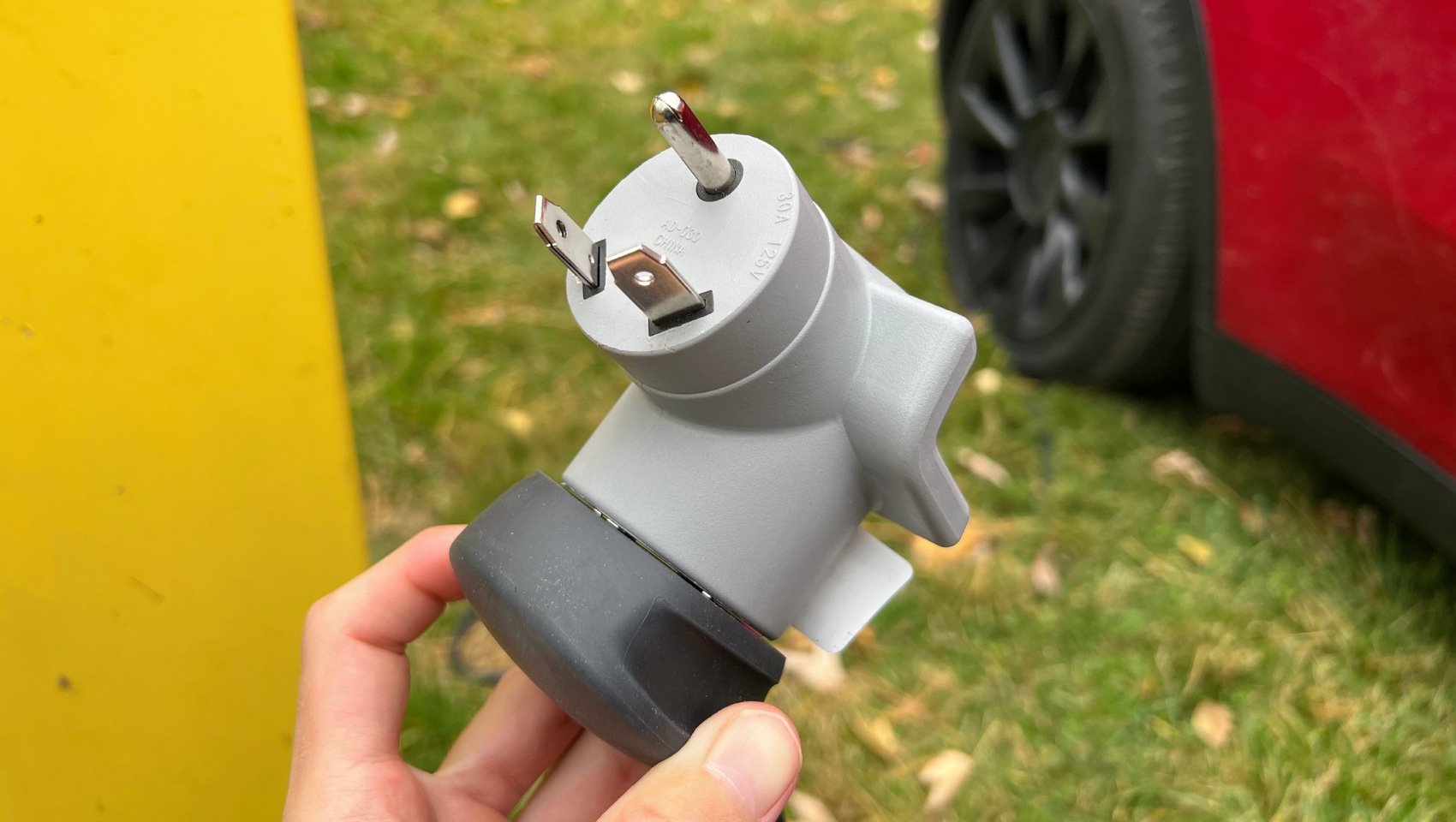
NEMA 14-50 (240V, 50A)
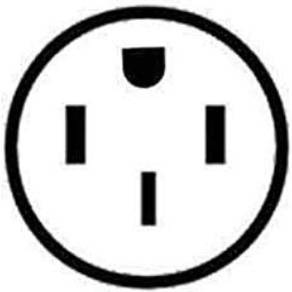
Now we’re cooking. If the campsite is described as having 50A electrical service, you can expect to find a NEMA 14-50 receptacle. Larger RVs with power-hungry appliances connect to the grid using NEMA 14-50. This is of course the same connector that most plug-in type home EV chargers utilize, and portable EV chargers will be compatible with NEMA 14-50 as well. Stepping up to 240 Volts allows for true Level 2 charging and will recharge any dead EV battery in a few hours. You can pull up to 40 amps from this connector, which is up to 9.6 kW! But realistically, most portable EV chargers (like the Tesla Mobile Connector) will be limited to 32 amps. More than enough for any EV battery during an overnight stay.
What Can I expect?
Call ahead or do online research about the available electrical service at the campsite location. But generally, a campsite designed for trailer camping might have TT-30 and NEMA 5-15 120 Volt connections. A camping site designed for larger RVs should have 50 amp service using a NEMA 14-50 and maybe additional NEMA 5-15 plugs. While a location designed for tent camping may only have 15 amp service over NEMA 5-15.
Most portable EV chargers will have NEMA 5-15 and 14-50 adapters for wide compatibility. By adding a TT-30 adapter to your arsenal, you can pretty much extract the most energy from any campsite you visit.

